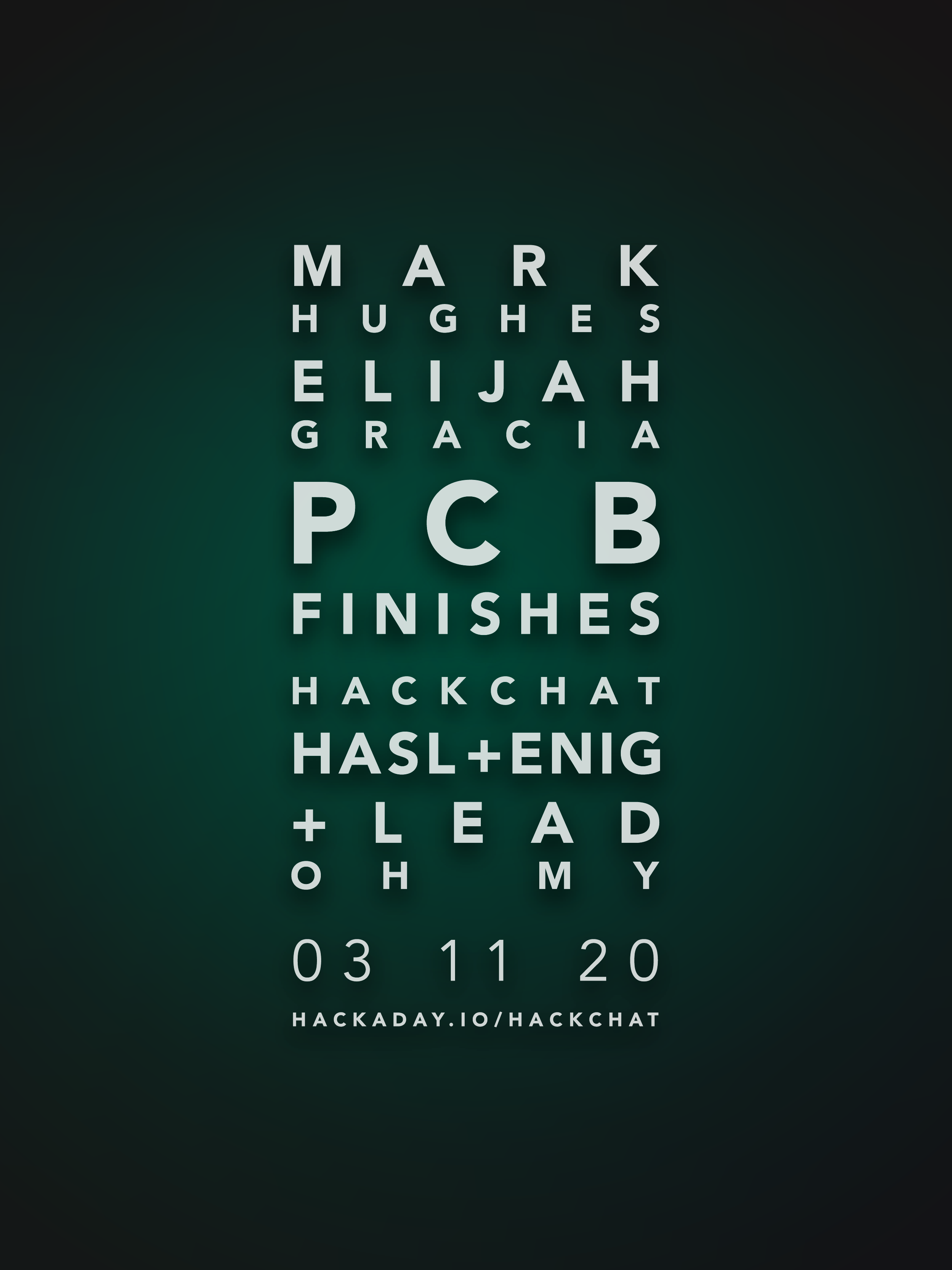Join us on Wednesday, March 11 at noon Pacific for the PCB Finishes Hack Chat with Mark Hughes and Elijah Gracia!
There’s no way to overestimate the degree to which the invention of the printed circuit board revolutionized electronics. What was once the work of craftspeople weaving circuits together with discrete components, terminal strips, and wiring harnesses could now be accomplished with dedicated machines, making circuit construction an almost human-free process. And it was all made possible by figuring out how to make copper foil stick to a flat board, and how to remove some of it while leaving the rest behind.
Once those traces are formed, however, there’s more work to be done. Bare copper is famously reactive stuff, and oxides soon form that will make the traces difficult to solder later. There are hundreds of different ways to prevent this, and PCB surface finishing has become almost an art form itself. Depending on the requirements for the circuit, traces can be coated with tin, lead, gold, nickel, or any combination of the above, using processes ranging from electroplating to immersion in chemical baths. And the traces aren’t the only finishes; solder resist and silkscreening are both important to the usability and durability of the finished board.
For this Hack Chat, we’ll be talking to Elijah Gracia and Mark Hughes from Royal Circuit Solutions. They’re both intimately familiar with the full range of PCB coatings and treatments, and they’ll help us make sense of the alphabet soup: HASL, OSP, ENIG, IAg, LPI, and the rest. We’ll learn what the different finishes do, which to choose under what circumstances, and perhaps even learn a bit about how to make our homebrew boards look a little more professional and perform a bit better.
 Our Hack Chats are live community events in the Hackaday.io Hack Chat group messaging. This week we’ll be sitting down on Wednesday, March 11 at 12:00 PM Pacific time. If time zones have got you down, we have a handy time zone converter.
Our Hack Chats are live community events in the Hackaday.io Hack Chat group messaging. This week we’ll be sitting down on Wednesday, March 11 at 12:00 PM Pacific time. If time zones have got you down, we have a handy time zone converter.
Click that speech bubble to the right, and you’ll be taken directly to the Hack Chat group on Hackaday.io. You don’t have to wait until Wednesday; join whenever you want and you can see what the community is talking about.

















Cheating a little here by not waiting until Wednesday. Common protection for exposed copper pads are HASL and ENIG.
HASL stands for Hot Air Solder Leveling. ENIG stands for Electroless Nickel Immersion Gold. HASL is offered in both leaded and lead-free version. Generally leaded HASL is cheapest and would work fine for hobby use. ENIG is more expensive since they use gold. Lead free HASL is considered if you absolutely need to make ROHS compliant finished product but I find reworking mistakes on lead-free solder a pain in the butt in some cases.
Nearly all PCB shop offers all 3 (leaded and lead-free HASL and ENIG), although OSHPark offers ENIG only
If your PCB is gonna be exposed to extreme environments, like dust, condensation, muck, run over to little Italy, or maybe little Mexico, and find one of those corner gas variety stores, buy a can of spray on ignition sealant and a hail Mary candle.
You should go ENIG if you are doing BGAs or QFNs and other small packages, otherwise it is not needed. Talking from experience as PCB designer in company which is doing HW development. Also we are doing everything lead free, it is not as bad as everybody say. Leaded solder is better for sure in terms of lifetime and repairability, but soldering itself is the same, you just have to be quicker and use higher temperatures (350°C is enough). I have no experience in using larger layer of gold (2u instead of 1u), does somebody has experience? In which cases is it worth it?